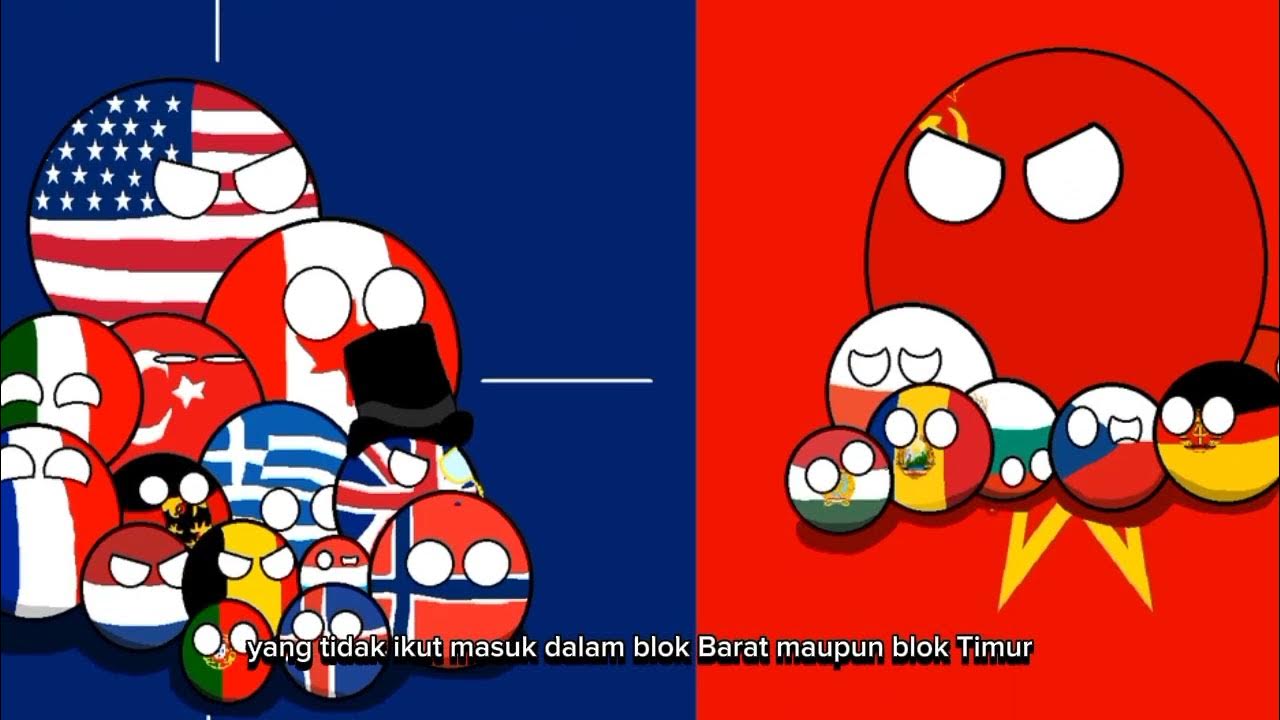Bab II Part 4 Pancasila dalam Kajian Sejarah Bangsa Indonesia
Summary
TLDRThe video transcript delves into Indonesia's political history, focusing on Soekarno's leadership, the events surrounding the end of the Old Order, and the rise of the New Order. It discusses the Supersemar decree, debates around ideologies like nationalism, Islam, and communism, and the influence of the PKI (Indonesian Communist Party). The discussion also highlights Soekarno's relationship with various political factions, his leadership challenges, and the broader impact on Indonesia's political landscape. The speaker reflects on the importance of understanding history to prevent the repetition of past political mistakes.
Takeaways
- 📜 The transition of power from Soekarno to Suharto marked the end of the 'Orde Lama' (Old Order) and the beginning of the 'Orde Baru' (New Order).
- ⚖️ Supersemar was the pivotal moment that led to the shift in political leadership, as Soekarno's authority declined both de facto and de jure.
- 🗳️ A significant debate emerged around the constitution, with discussions about whether Pancasila could be changed, reflecting ideological divisions in Indonesia.
- 🤔 Ideological factions in post-independence Indonesia included Islam, nationalism, and communism, which influenced debates on the country's foundation.
- 🇮🇩 Soekarno, as a strong leader, imposed the original Pancasila and managed national laws, but the nation's understanding of democracy was limited at that time.
- 🛑 The Communist Party of Indonesia (PKI) played a controversial role, being involved in resistance against the Dutch, which made Soekarno cautious about completely cutting ties with them.
- 🧠 The script emphasizes the psychological and political complexities that Soekarno faced, balancing historical loyalties with present challenges.
- 🎓 The discussion highlights how Indonesia struggled to adapt to democracy after centuries of colonialism, reflecting on the mindset of the people during this era.
- 💡 The role of ideology in shaping political alliances and debates is central, with Islamic and nationalist figures debating the direction of the state alongside communist influences.
- 🔄 The cyclical nature of history is noted, suggesting that ideologies like communism may resurface, and the nation must be vigilant in preserving the core values of Pancasila.
Q & A
What major event marked the end of Soekarno’s rule in Indonesia?
-The end of Soekarno’s rule in Indonesia was marked by the issuance of the Supersemar (Surat Perintah Sebelas Maret) in 1966, which effectively transferred power to Suharto, signaling the beginning of the New Order era.
What were the key ideologies debated during the formation of Indonesia’s post-colonial government?
-The key ideologies debated were nationalism, Islamism, and communism. These debates mirrored the ideological divisions within Indonesia, with parties like PNI (nationalist), Masyumi (Islamist), and PKI (communist) leading the discussion.
How did the ideological composition of the Indonesian Constituent Assembly reflect the nation's political divisions?
-The Indonesian Constituent Assembly was divided into four major groups: nationalists, Islamists, communists, and liberals. Each faction tried to push for their ideological vision in shaping the future government, which contributed to years of political deadlock.
Why was Soekarno criticized for his association with communism?
-Soekarno’s close ties with the Indonesian Communist Party (PKI) were controversial due to rising anti-communist sentiments, especially during the Cold War. His relationship with the PKI led many to accuse him of being too sympathetic to communist ideologies.
What was the impact of Soekarno’s concept of ‘Nasakom’ on Indonesian politics?
-‘Nasakom’ (Nationalism, Religion, and Communism) was an attempt by Soekarno to unite the three main political ideologies in Indonesia under one framework. However, it faced criticism, especially due to the growing tensions between communist and non-communist factions.
What challenges did Indonesia face in implementing democracy under Soekarno?
-Under Soekarno, Indonesia struggled with democracy due to a lack of understanding and readiness among the population, as well as internal divisions. Soekarno’s rule became more authoritarian as he shifted towards ‘Guided Democracy’ to manage the political chaos.
Why was the Communist Party of Indonesia (PKI) eventually disbanded?
-The PKI was disbanded following the failed coup attempt in 1965 (G30S), which was attributed to communist elements within the military and PKI members. This event triggered widespread anti-communist purges and led to the party’s official dissolution.
How did Soekarno’s foreign policy affect his standing with global powers like the US and the Soviet Union?
-Soekarno’s foreign policy leaned towards non-alignment but became closer to the Soviet Union and China due to his anti-imperialist stance and his resentment towards Western powers like the US, which he felt did not respect Indonesia’s sovereignty.
What role did Soekarno’s leadership style play in the stability of Indonesia’s government?
-Soekarno's leadership was charismatic but increasingly authoritarian, especially towards the end of his rule. His 'Guided Democracy' system centralized power under him, which temporarily stabilized the country but eventually led to political unrest.
How did Indonesia’s transition from the Old Order to the New Order affect its governance structure?
-The transition from Soekarno’s Old Order to Suharto’s New Order marked a shift from ‘Guided Democracy’ to a more militarized and controlled government. The New Order prioritized economic development, political stability, and anti-communism.
Outlines

This section is available to paid users only. Please upgrade to access this part.
Upgrade NowMindmap

This section is available to paid users only. Please upgrade to access this part.
Upgrade NowKeywords

This section is available to paid users only. Please upgrade to access this part.
Upgrade NowHighlights

This section is available to paid users only. Please upgrade to access this part.
Upgrade NowTranscripts

This section is available to paid users only. Please upgrade to access this part.
Upgrade NowBrowse More Related Video
5.0 / 5 (0 votes)





